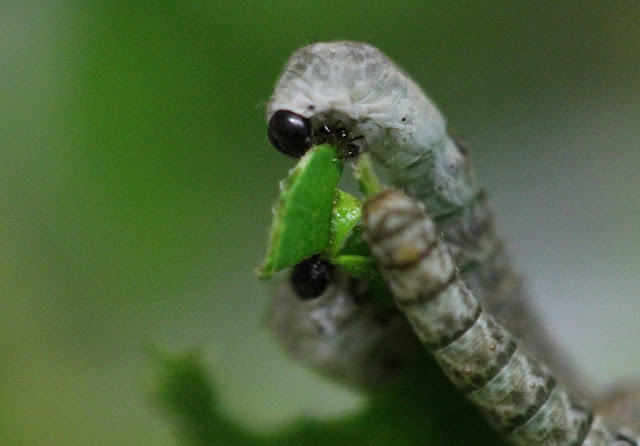What a fascinating event! The silkworm releases liquid
silk from the two silk glands near the lower jaw which then flows through the
"spinneret". The
two silk glands constitute approximately one-quarter of the silkworm larva's
mass. The fluid hardens
into fine silk threads as soon as it contacts the air. At first, the caterpillar
fixes supportive threads of silk that will hold the cocoon in place. Then it swings its
head from side to side in a figure-eight movement, encasing its body in silk. For about three days the caterpillar spins
the continuous silk thread until it is fully encased in its beautiful protective cocoon of silk. It can spin from about 600 to 900 metres of
continuous silk thread! The silk is beautiful
and shines in the light (lustrous). It is amazing
how the silkworm "stands" on the silk thread and then maneuvers
within the cocoon to produce the perfect cocoon shape.

 |
| Click on the photo to enlarge. You can see the spinneret and the silk thread. |
A video worth watching to see the silkworms spinning is entitled
"Silk Pavilion" https://vimeo.com/67177328

















































